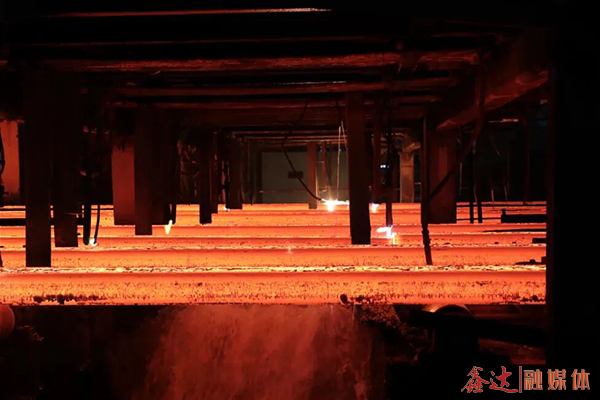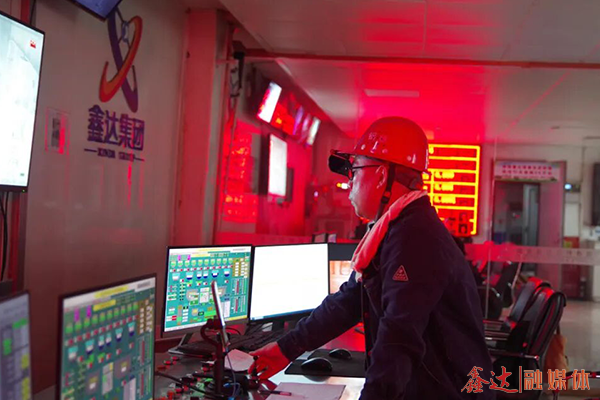Self-examination and self-correction leave no blind spots
The rectification and implementation have achieved practical results
Hebei Xinda Steel Group Co., LTD
Steelmaking plant
During the critical stage of the steel industry's transformation towards green, intelligent and lean development, Hebei Xinda Steel Group Co., Ltd. has always regarded "lean management" as an important means to solve development problems and enhance core competitiveness. As the core link in the production chain, the steel plant adheres to the principle of "self-examination and self-correction without blind spots and effective rectification and implementation", and makes efforts from dimensions such as equipment maintenance, on-site governance, and problem rectification. With a series of solid measures, it has written a new chapter of lean development and injected strong impetus into the green and high-quality development of the group.

Self-examination and self-correction: Laying a Solid Foundation for Lean Management
Lean management begins with details and is accomplished through persistence. The steelmaking plant has a profound understanding of this core essence, taking internal self-examination and self-correction as a regular task. It focuses on the "pain points" and "difficulties" in the production site and, with the attitude of "not letting go of any hidden danger and not missing any blind spot", conducts all-round and blind spot-free investigation and rectification actions.
For key areas such as equipment operation and on-site environment, identify key issues and achieve closed-loop rectification on the same day. Recently, it was found that the clean ring water pump room, as a key area for ensuring the circulation of production water, has dust on the surface of the equipment. This not only affects the heat dissipation of the equipment but may also accelerate the aging of components. Staff members hold rags to wipe each unit one by one to ensure that the equipment shells are as clean and shiny as new. The continuous casting blind plate valve is the "key valve" of the continuous casting system. Long-term high-temperature operation is prone to accumulate dust. Maintenance personnel use special tools to clean the accumulated dust in the gaps of the valve group to ensure the smooth opening and closing of the valve. The cleaning team adopted the method of "sweeping first and then mopping, and working in zones" to restore the original color of the platform floor. The motor of the electrostatic precipitator bucket elevator is the "power source" of the dust removal system. The staff not only remove the oil stains on the surface of the motor but also paint and brighten the motor casing, which not only enhances the appearance of the equipment but also facilitates subsequent operation and maintenance inspections.
From dust removal from equipment to optimization of component sealing, the steel plant promotes "big improvements" through "small rectifications". By implementing a daily self-inspection and same-day rectification working mechanism, it integrates the lean concept into every aspect of production, making "cleanliness, tidiness and efficiency" the norm in the workshop.

Closed-loop rectification: Press the "acceleration button" of 6S management
6S management is an important carrier of lean management and an effective means to enhance on-site management levels. The steelmaking plant actively responded to the 6S "Snap and Report" rectification requirements, aiming for "zero problems left behind, zero delay in rectification, and zero rebound in effect". It focused on tackling key issues in areas such as scrap steel storage and belt conveyors, and delivered an outstanding rectification report card.
Through the concerted efforts of all personnel, all problem items have been rectified, with a rectification pass rate of 97.2%. From "scattered waste materials" to "neat and orderly", from "exposed belt seams" to "fully enclosed operation", the steel plant has transformed 6S management from "paper requirements" to "on-site real scenes" with tangible rectification results, and has also created a safer and more comfortable working environment for employees.

Multi-dimensional Efforts: Accelerating Lean Improvement
While conducting regular self-inspections and carrying out 6S rectifications, the steel smelting plant has taken the "Improvement Week" campaign as an opportunity to focus on key sections and critical projects, continuously promoting lean improvement, and using the "nail-hammering spirit" to overcome production challenges.
During the improvement week management, the raw material workshop took the initiative to act, achieving 100% completion of two key tasks: The tunpacket is the "container" for molten steel casting. After long-term use, it is prone to accumulate dust and residue inside. If not cleaned in time, it will affect the quality of molten steel. The preparation section organized personnel to carry out a double cleaning of "scraping and blowing" on the inner wall of the tunpacket to ensure that the cleanliness of the tunpacket meets the standards. The secondary dust removal system of the converter is a key device for controlling dust emissions. One of the cylinders had a problem of no reverse blowing in the pulse valve, which led to a decrease in dust removal efficiency. The operation and maintenance personnel of the operation section quickly identified the cause of the fault and replaced the damaged solenoid valve component, restoring the efficient operation of the dust removal system.
In the advancement of key rectification matters, the preparation section also performed outstandingly: If the paint buckets generated from cold repair operations are not stored properly, there may be environmental and safety risks. The section re-planned the storage area, set up dedicated shelves and posted labels to achieve classified storage and orderly management of paint buckets. The receiving port of the fabric trolley is the "entry point" for raw material transportation. The accumulation of falling materials can easily cause blockage of the receiving port. Staff adjust the Angle of the receiving port and install material blocking plates to reduce the accumulation of falling materials from the source.
Conclusion
From equipment maintenance to on-site management, from problem rectification to continuous improvement, the lean practices of the steel plant have not only enhanced its own production efficiency and management level, but also provided a "grassroots model" for the group's green and high-quality development. Lean management, as a "sharp tool" for reducing production costs, is a "guarantee" for improving product quality, and even more so, a "path" for achieving green development. In the future, all production units should continuously implement "lean management", making "striving for excellence" the voluntary action of all Xinda people. With the vigor of "rolling up our sleeves and working hard", we should solve development problems. With the belief of "remaining true to our original aspiration and forging ahead bravely", we should scale the peak of the industry. We should truly achieve strengthening the foundation with lean management and winning the future with green development!

 Email
Email Email
Email


